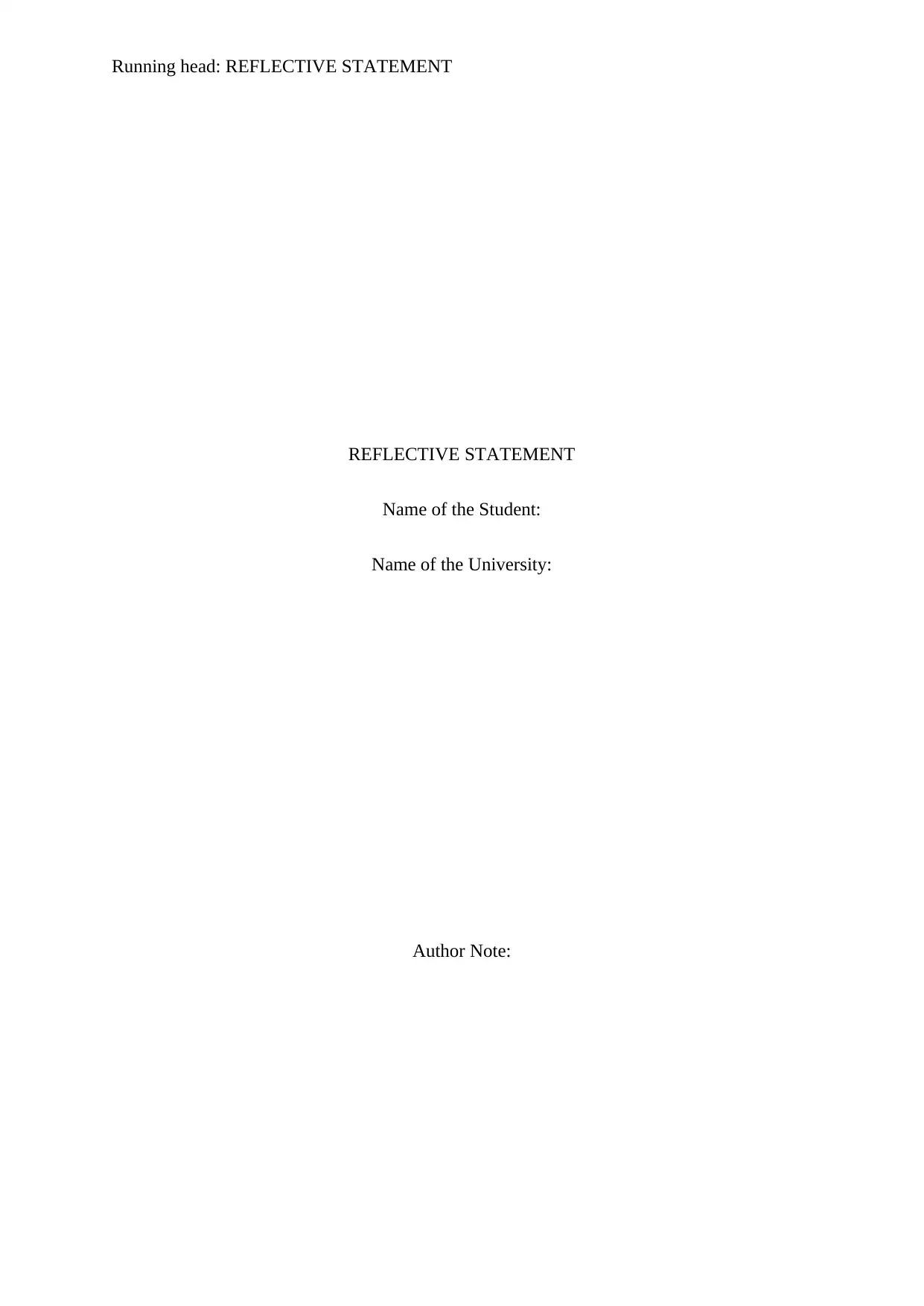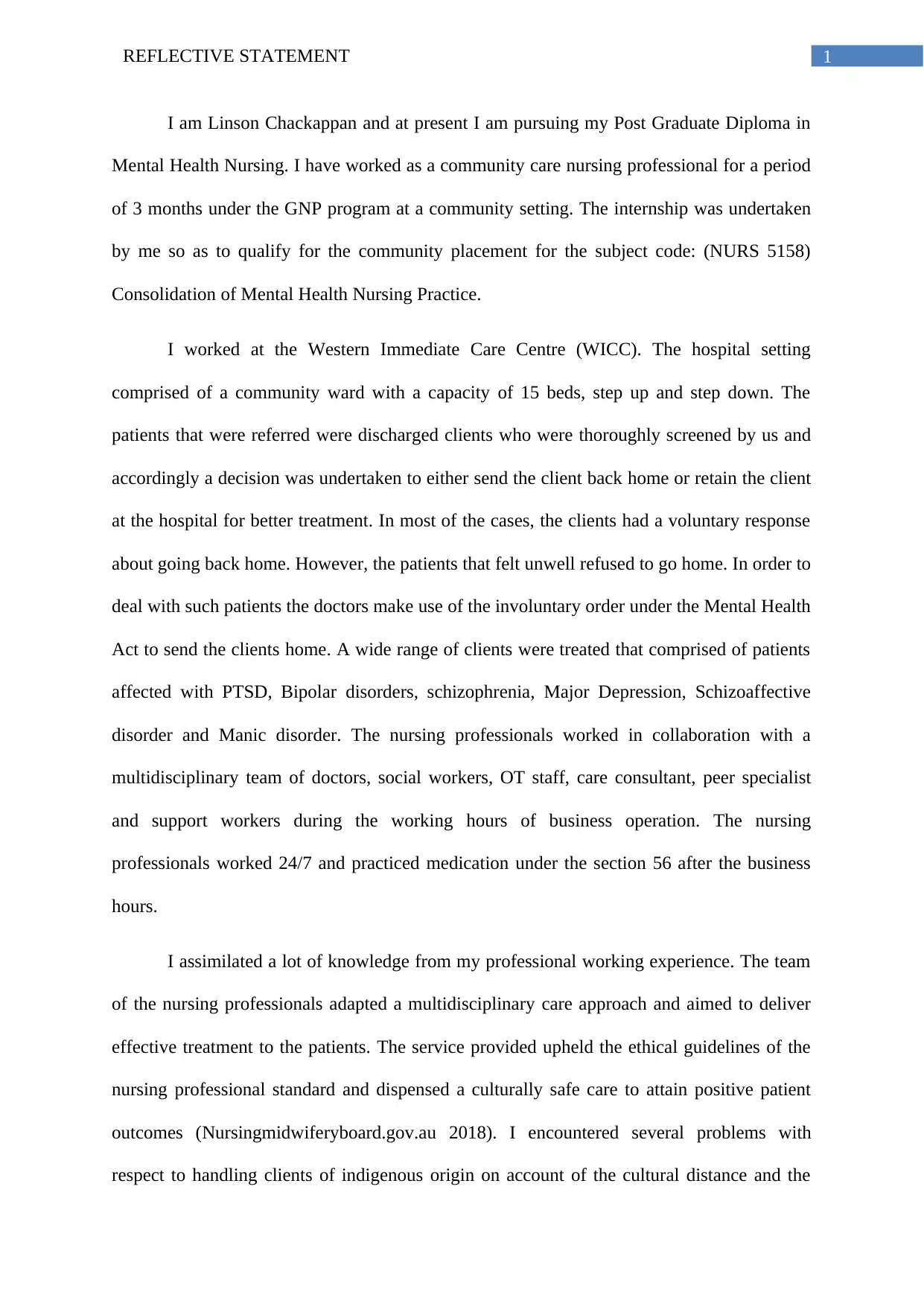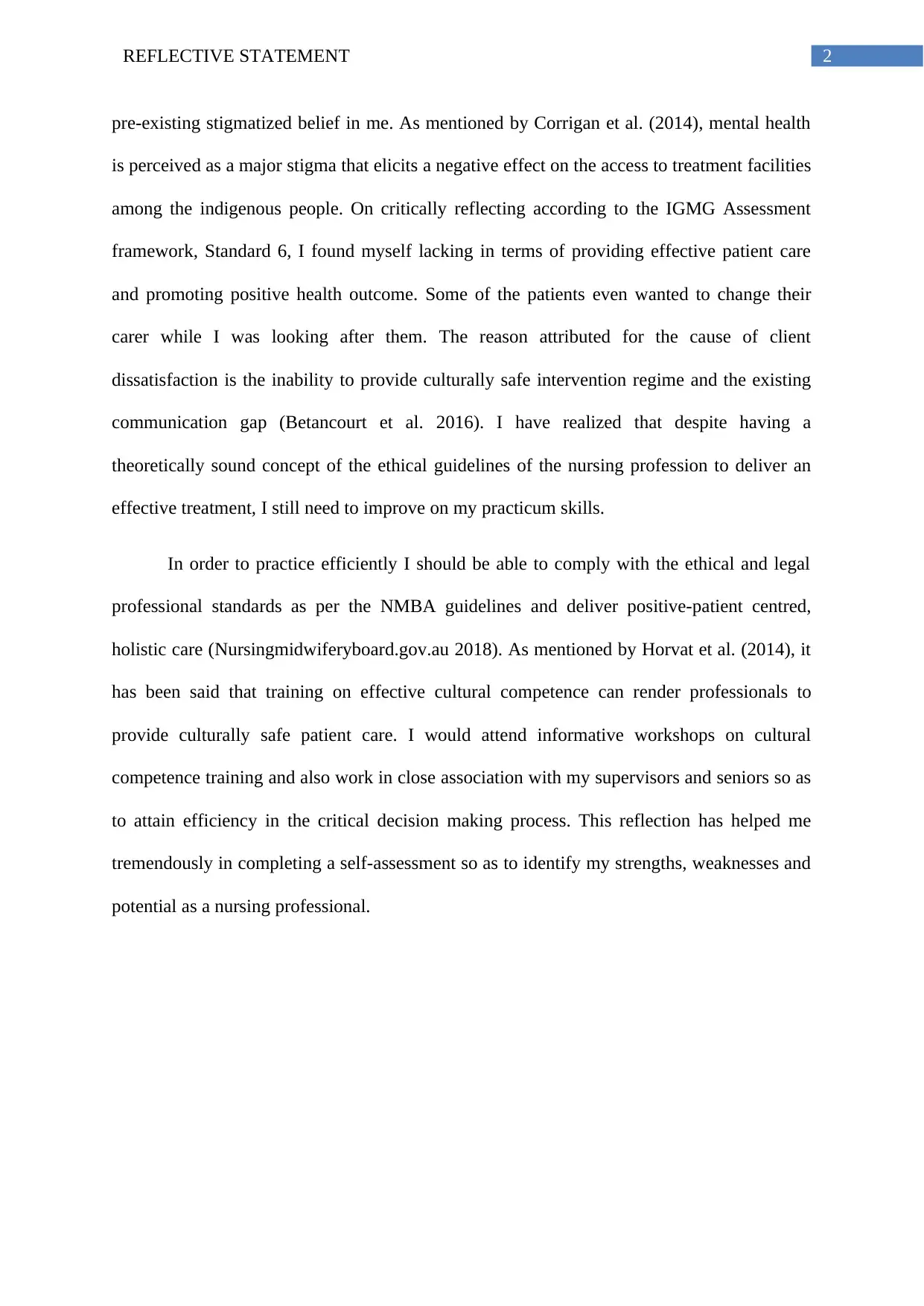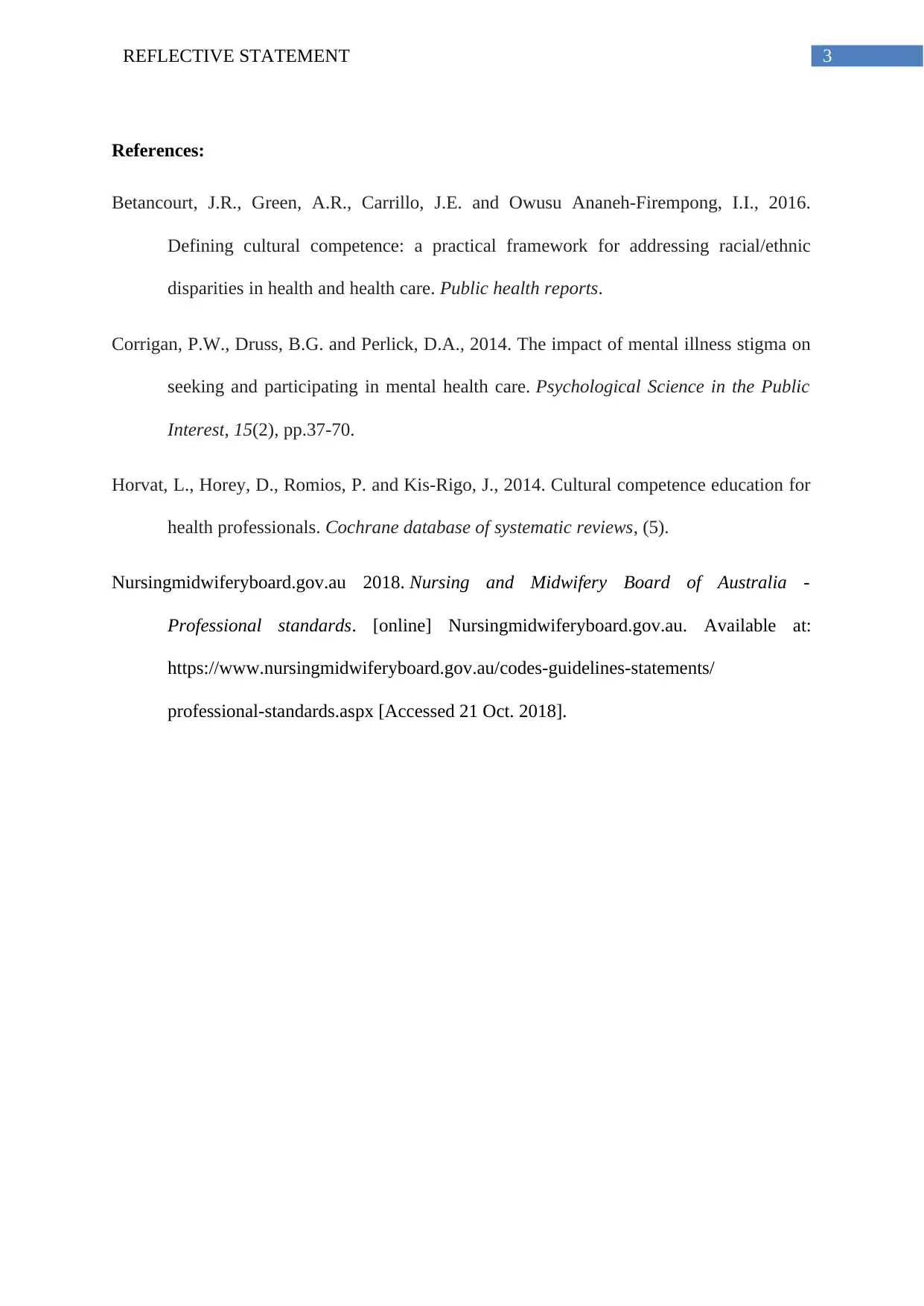Reflective Statement: Community Placement in Mental Health Nursing
VerifiedAdded on 2023/06/03
|4
|819
|473
Journal and Reflective Writing
AI Summary
This reflective statement, authored by a student pursuing a Post Graduate Diploma in Mental Health Nursing, details their community placement experience at the Western Immediate Care Centre (WICC). The student reflects on their practice, focusing on the challenges faced in handling clients of indigenous origin due to cultural differences and pre-existing stigmas. The statement highlights the importance of cultural competence, ethical guidelines, and the need for continuous improvement in practical skills to provide effective, patient-centered care. The student references the IGMG Assessment framework and NMBA guidelines, emphasizing the significance of multidisciplinary teamwork and culturally safe interventions. The reflection concludes with an assessment of strengths, weaknesses, and future professional development goals, including attending cultural competence training workshops and seeking guidance from supervisors.
1 out of 4











![[object Object]](/_next/static/media/star-bottom.7253800d.svg)